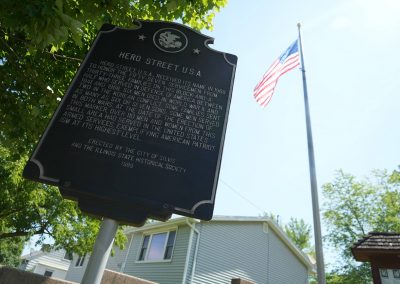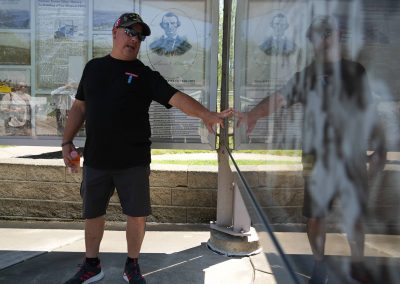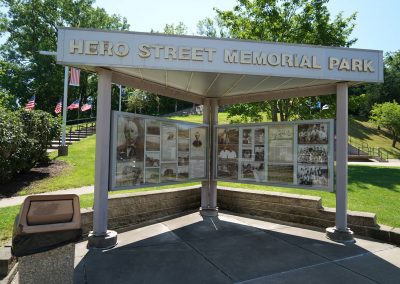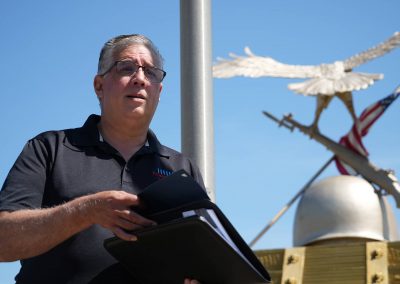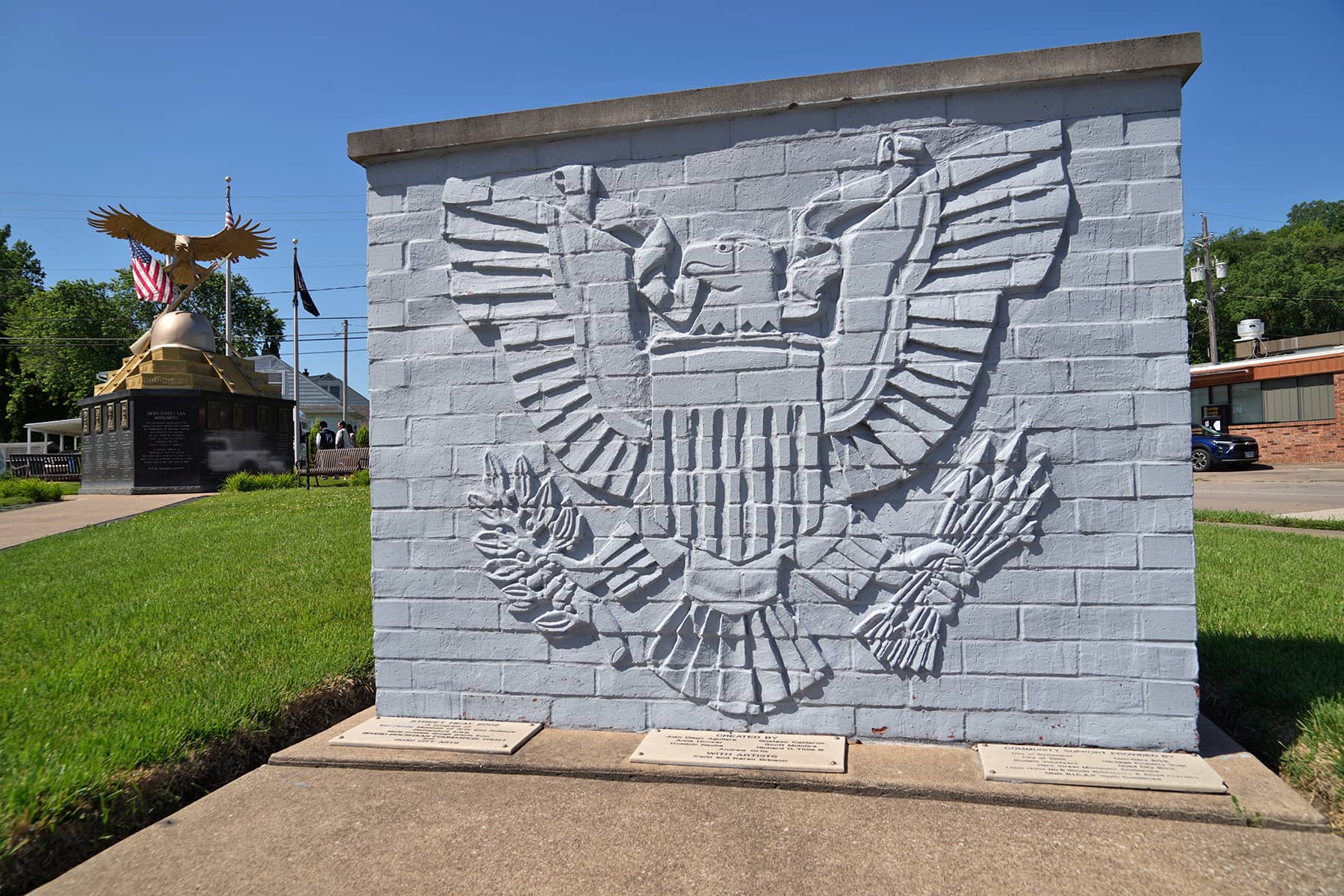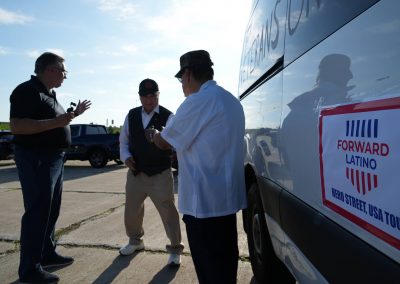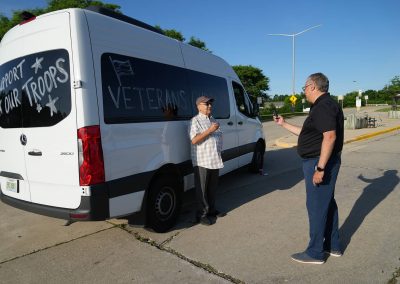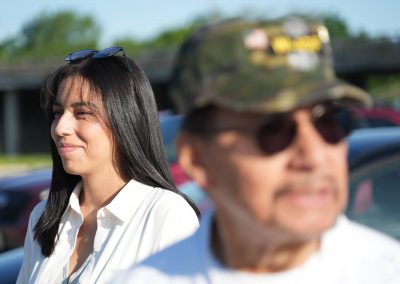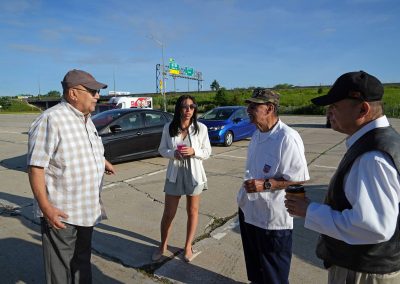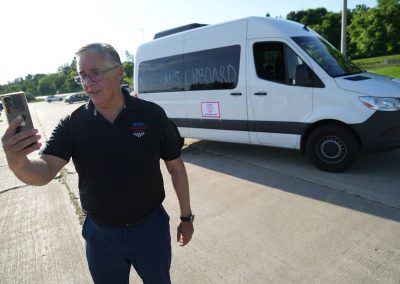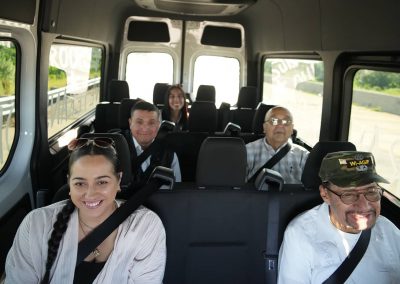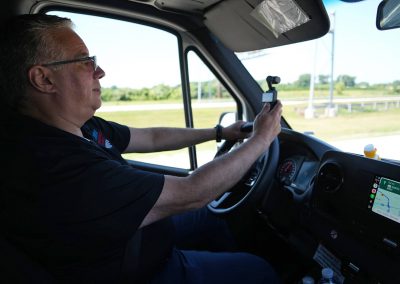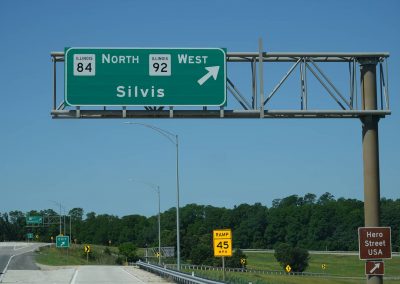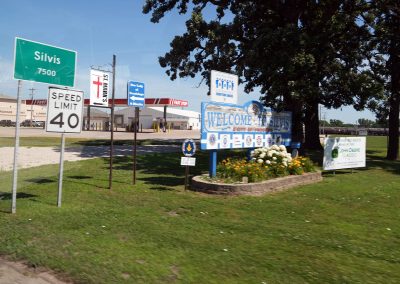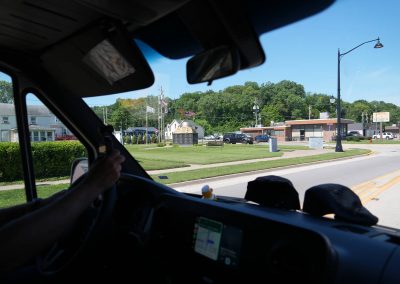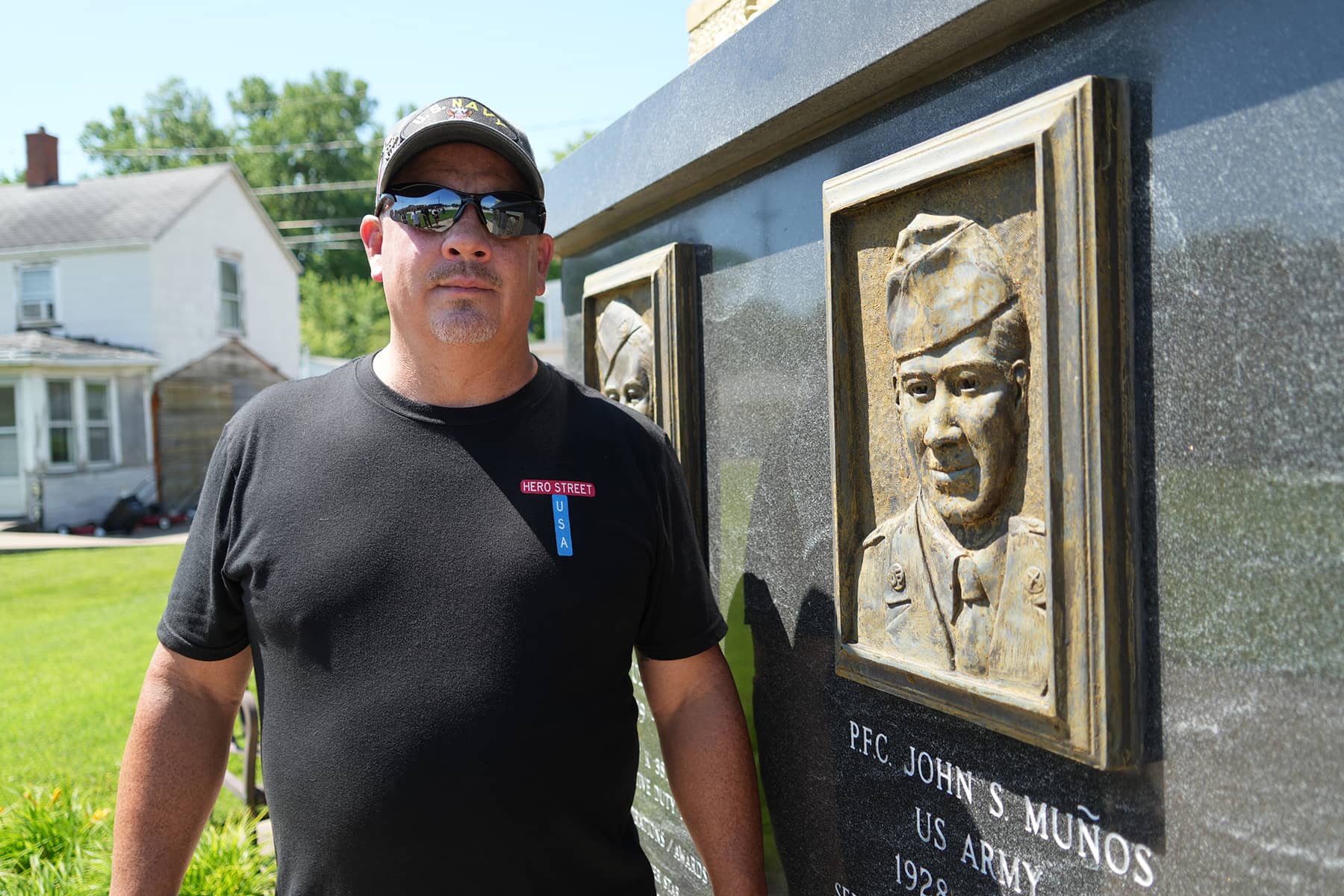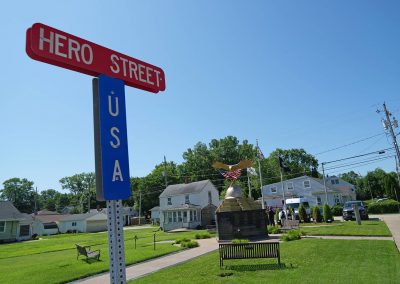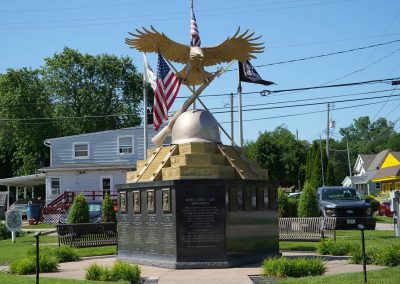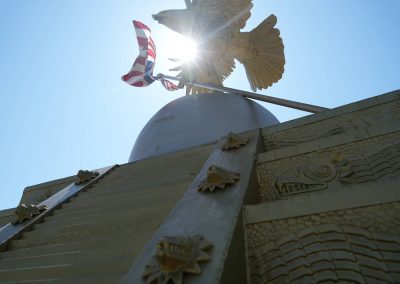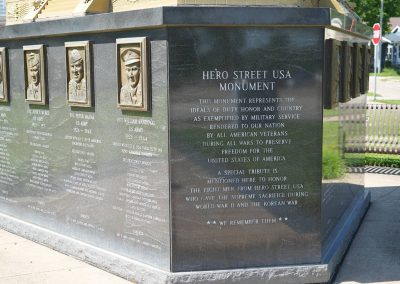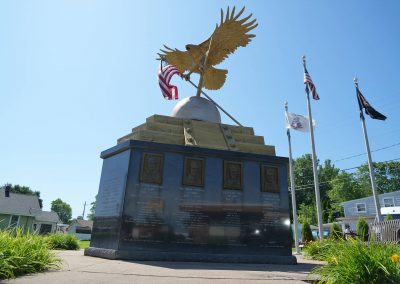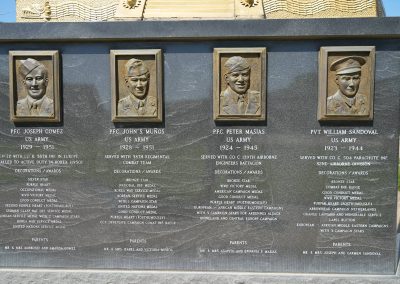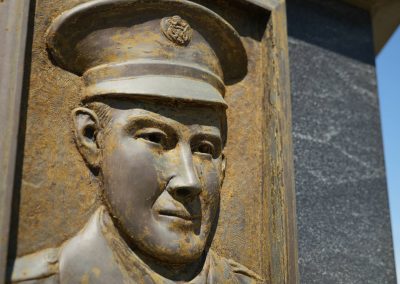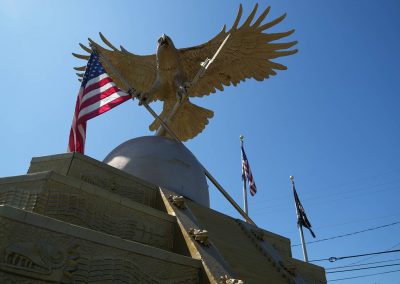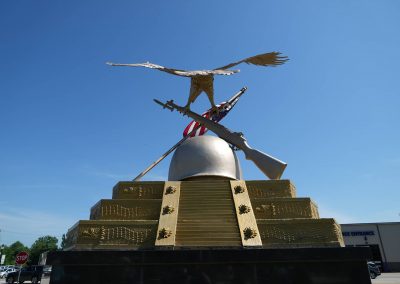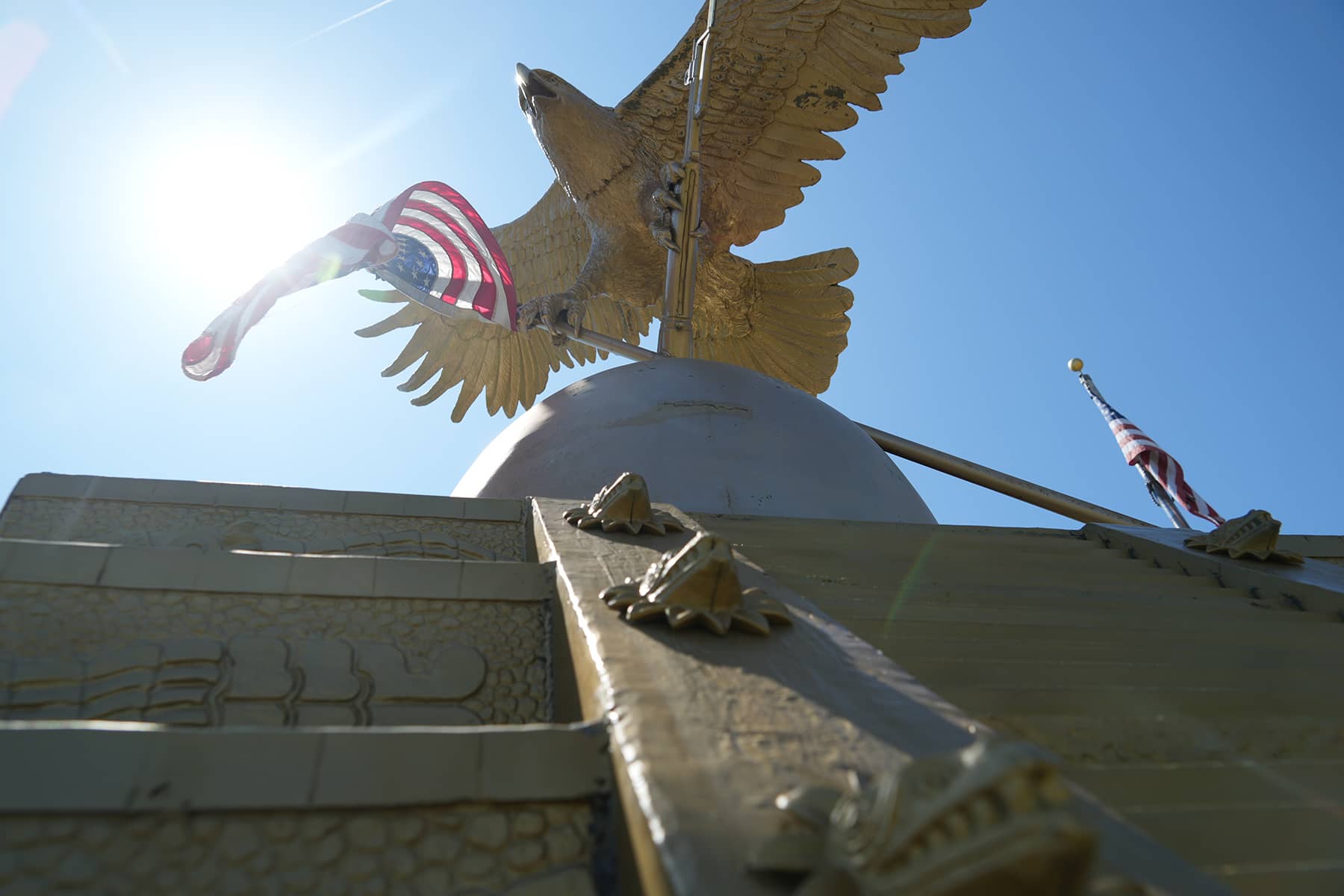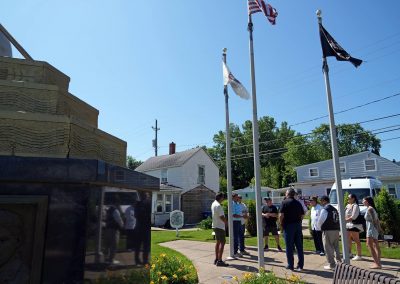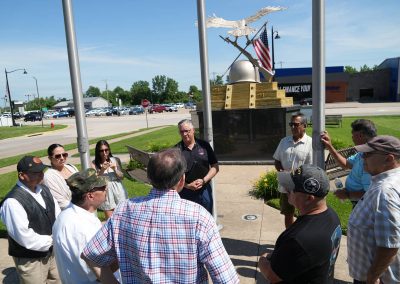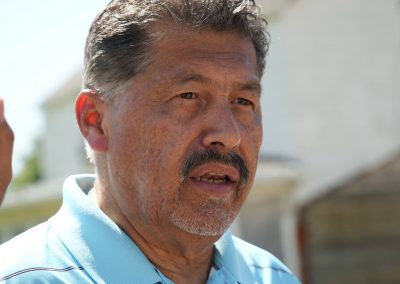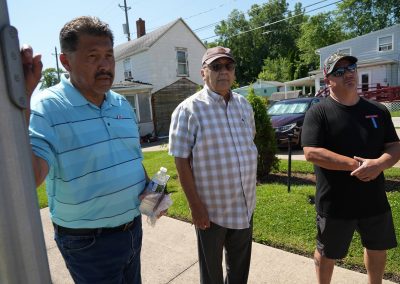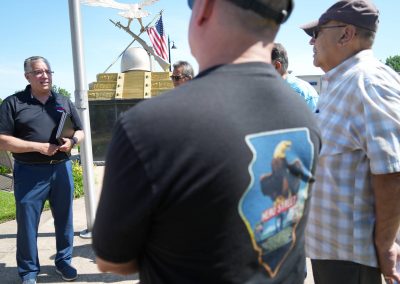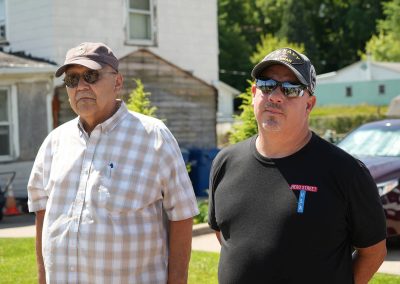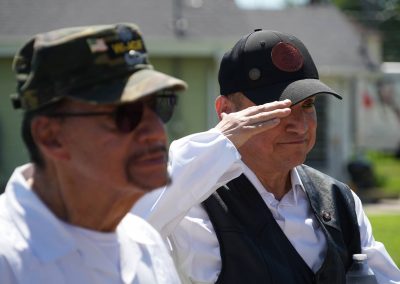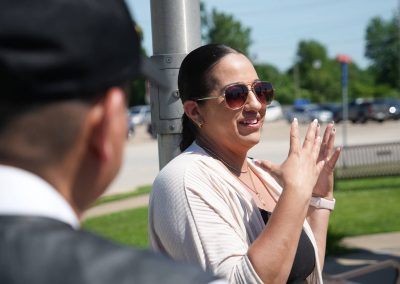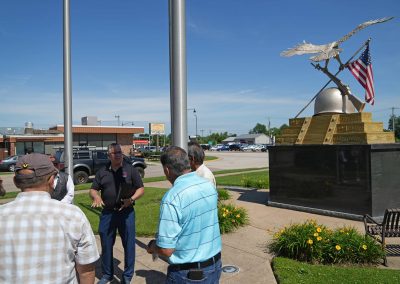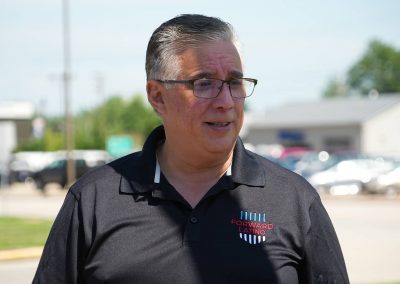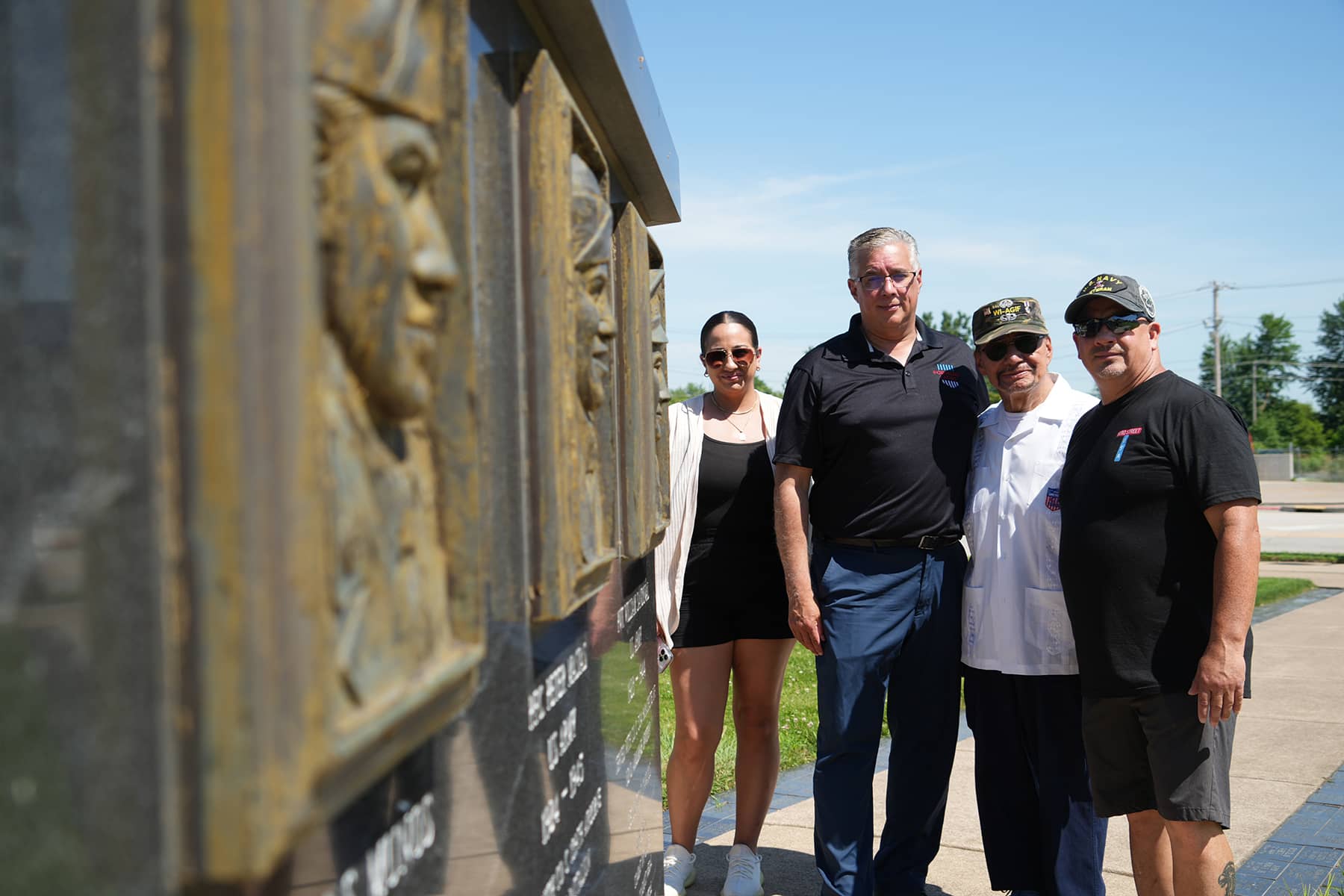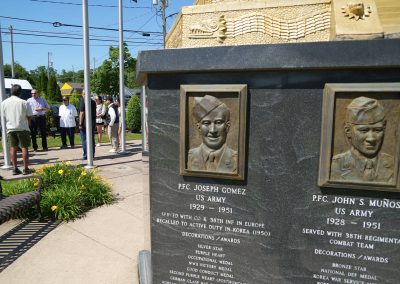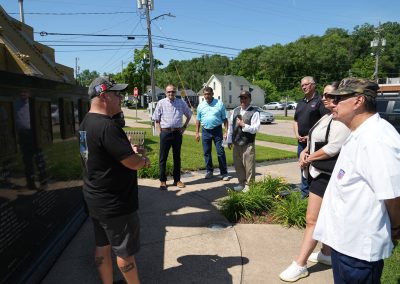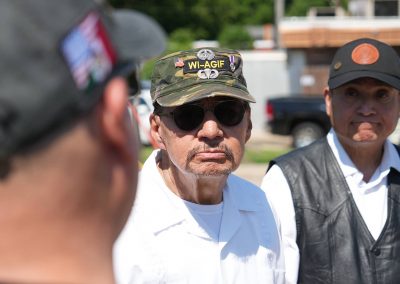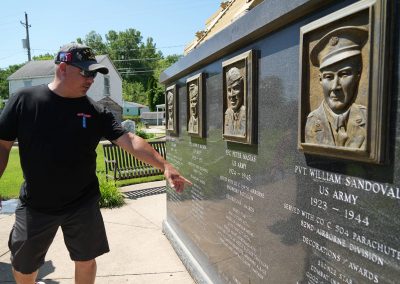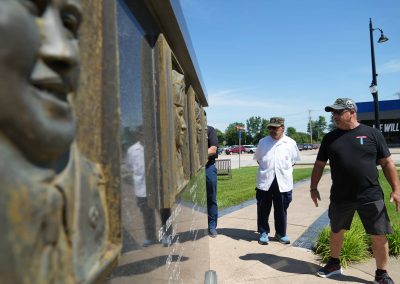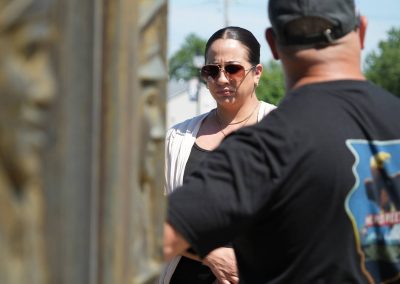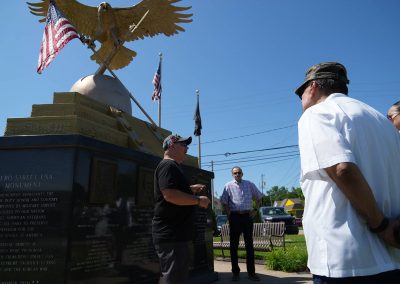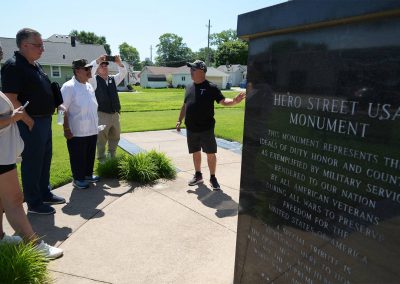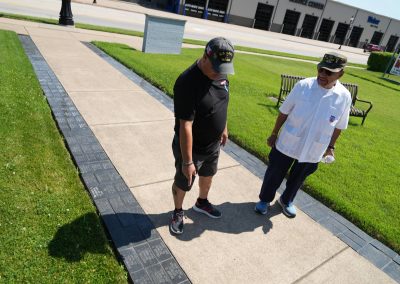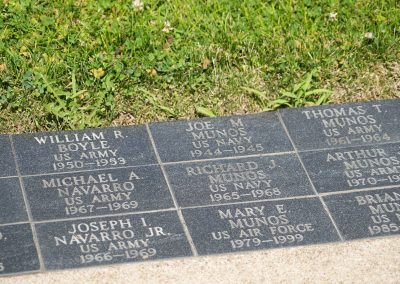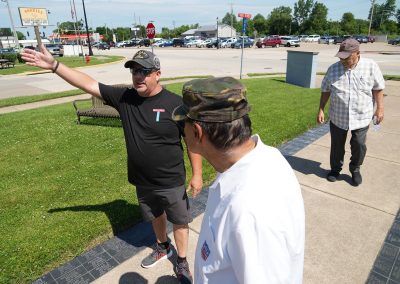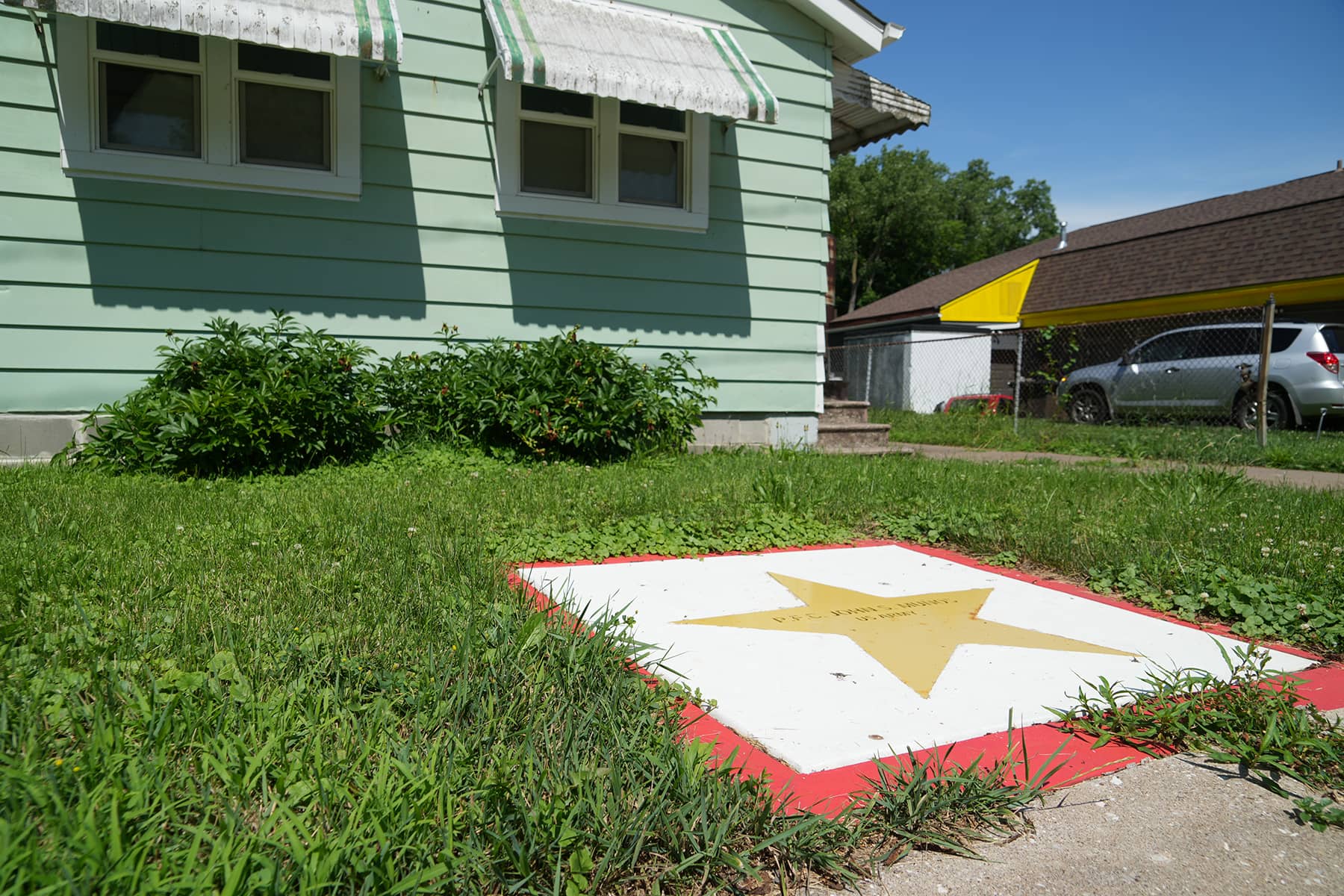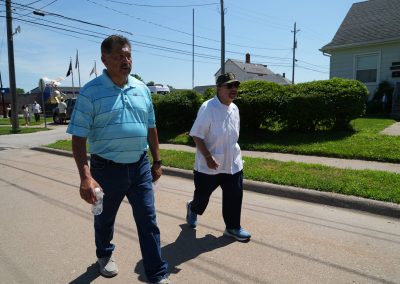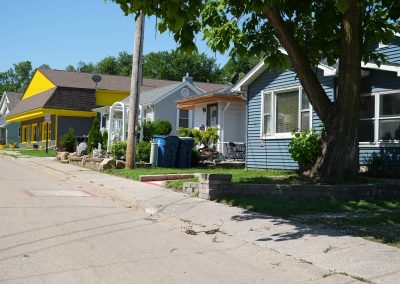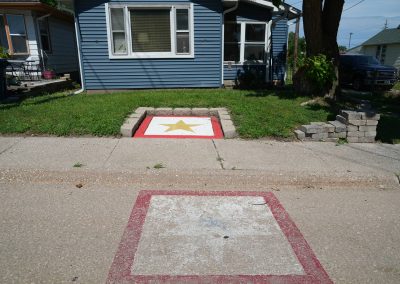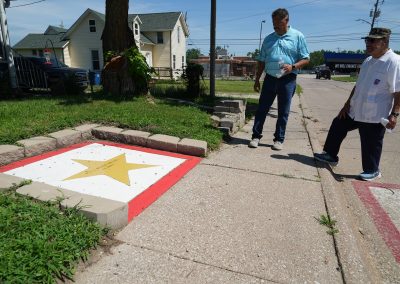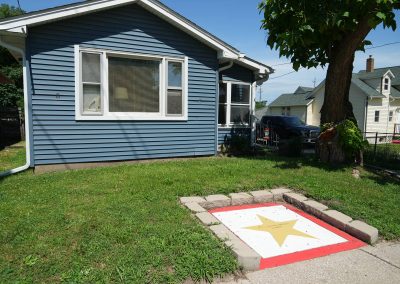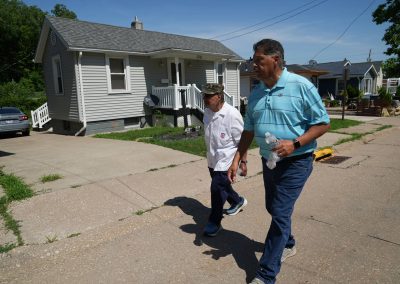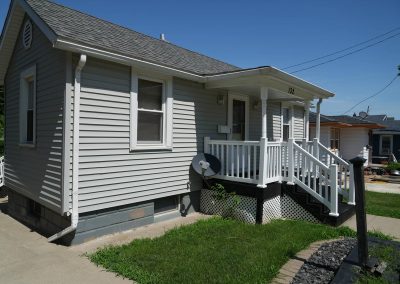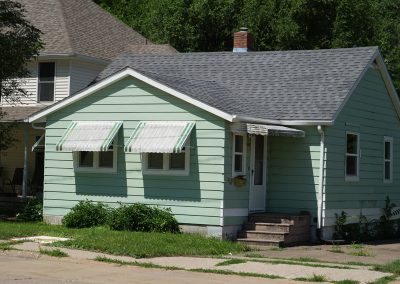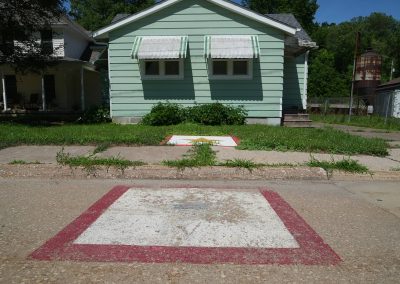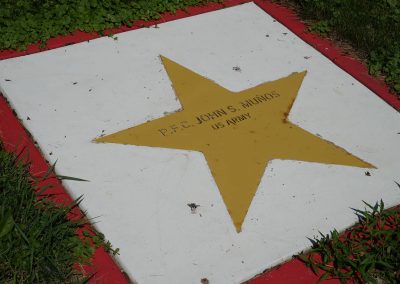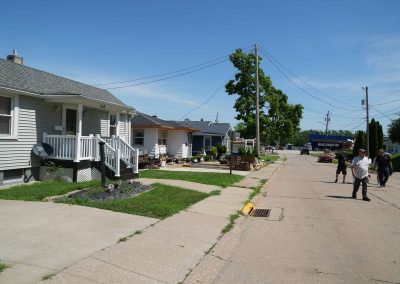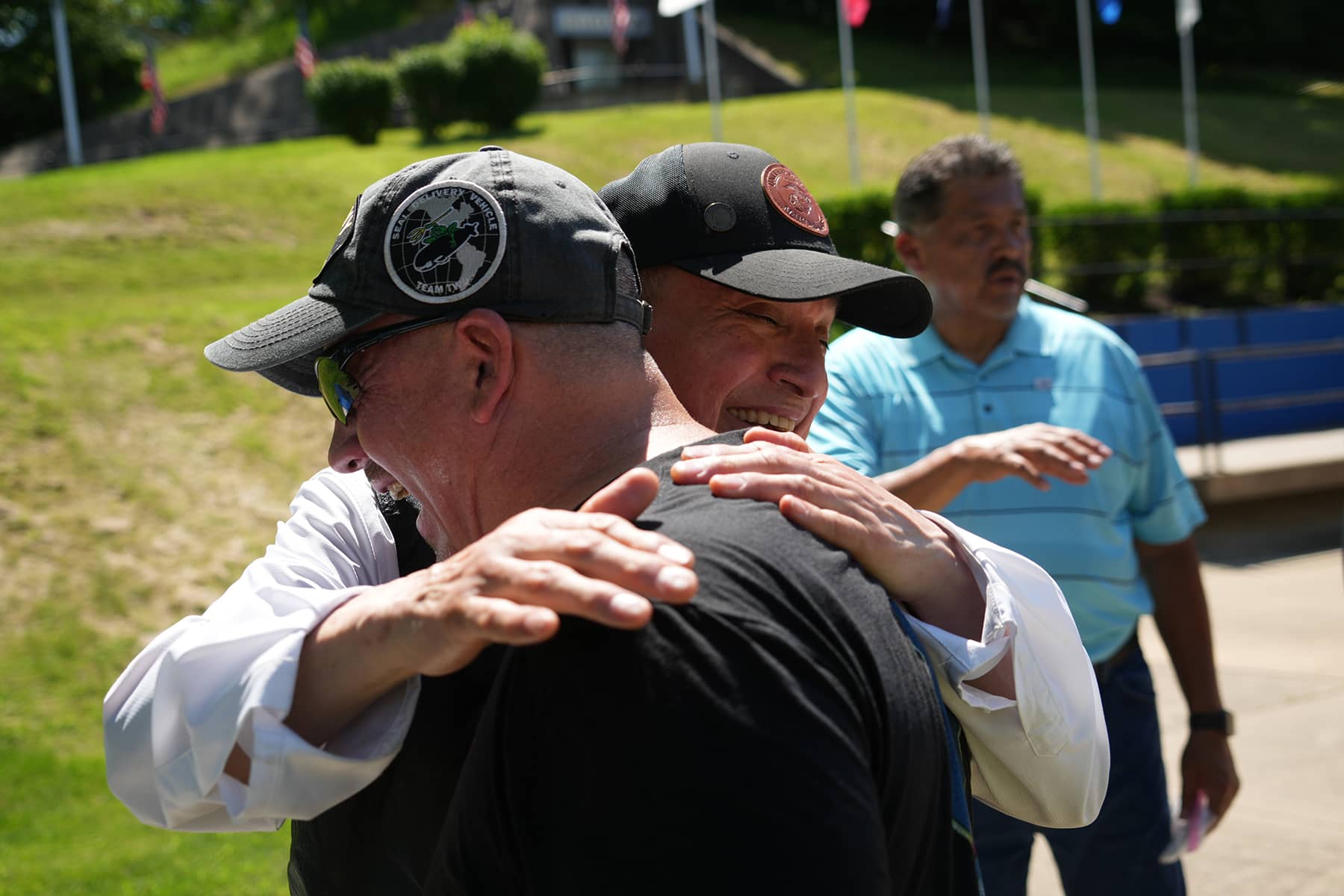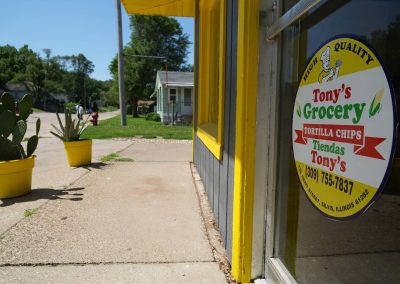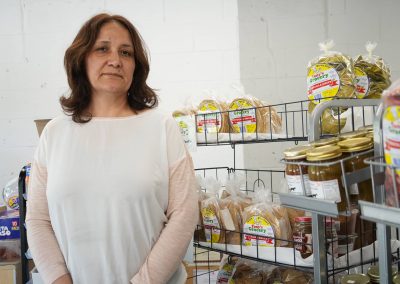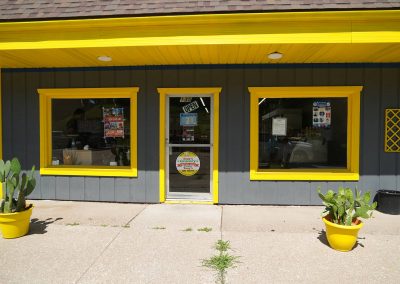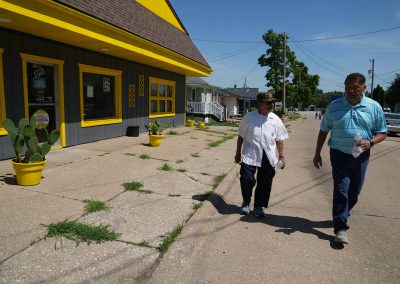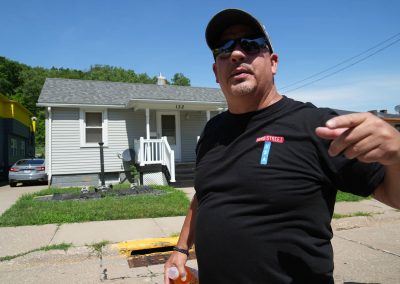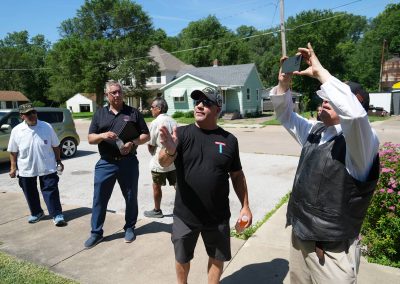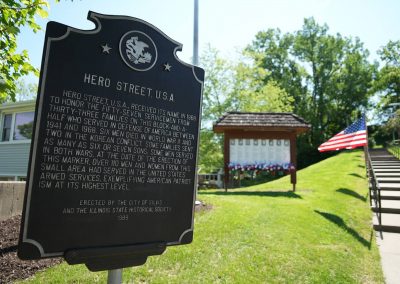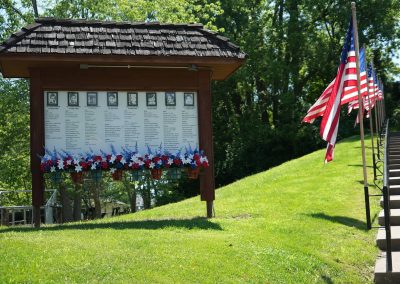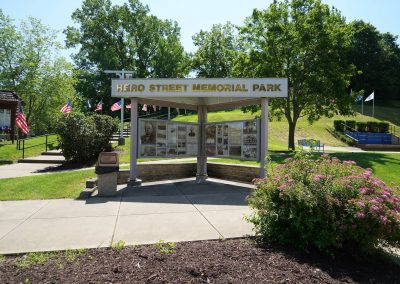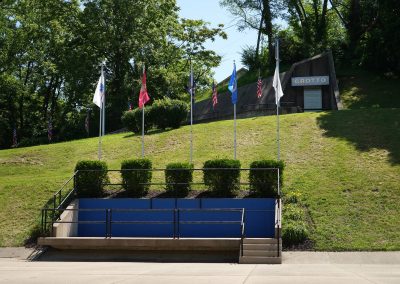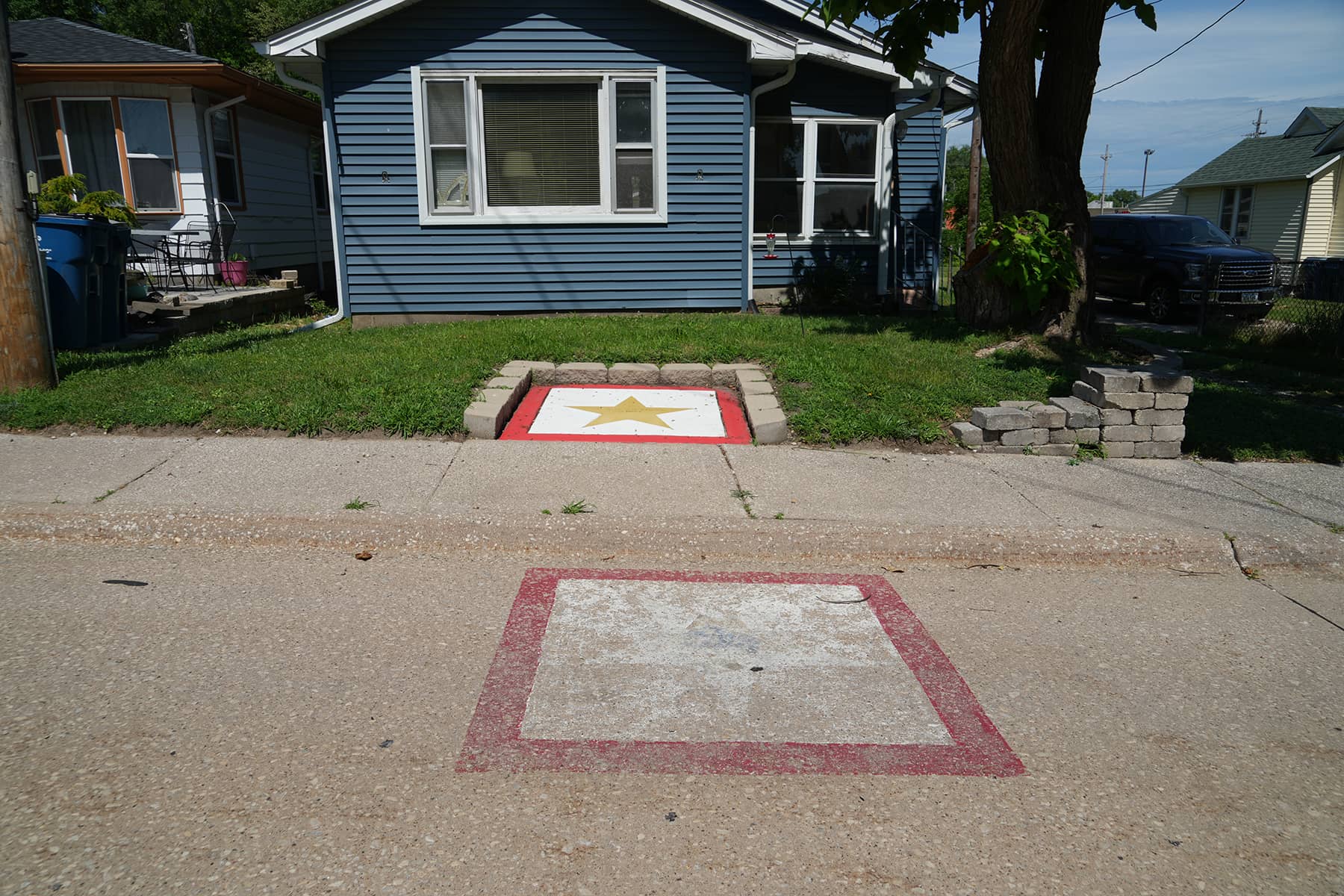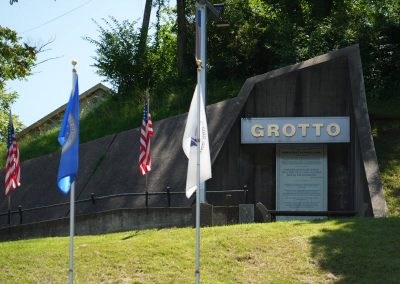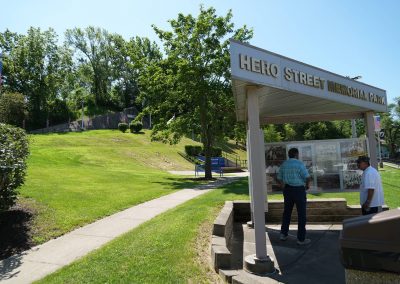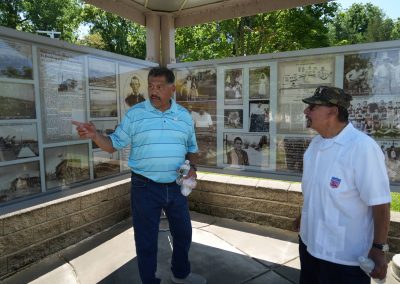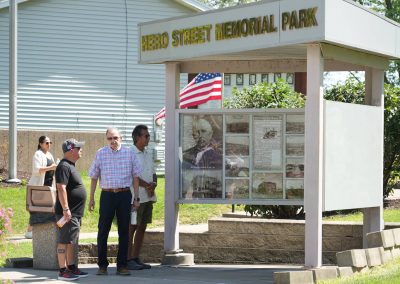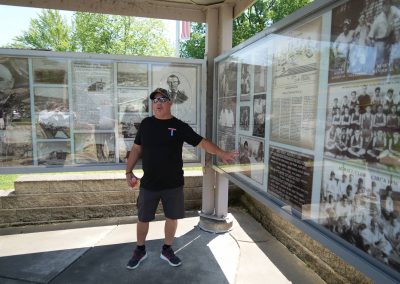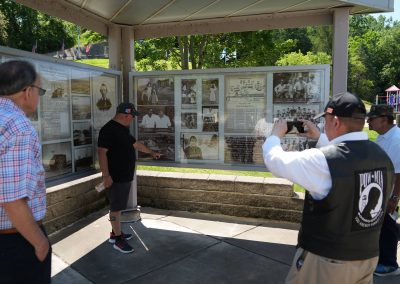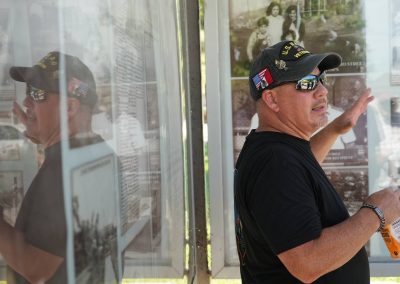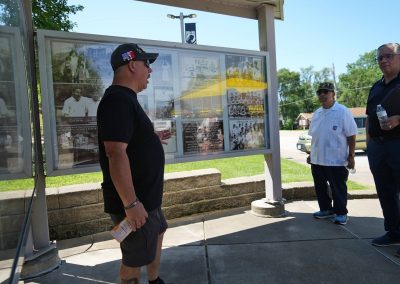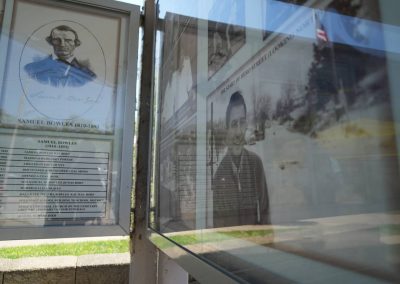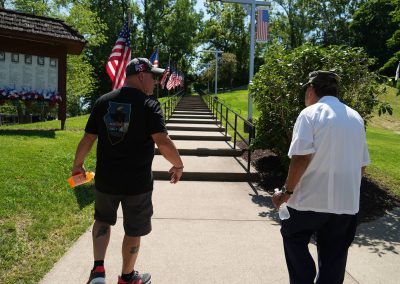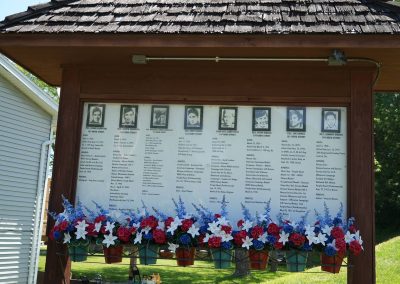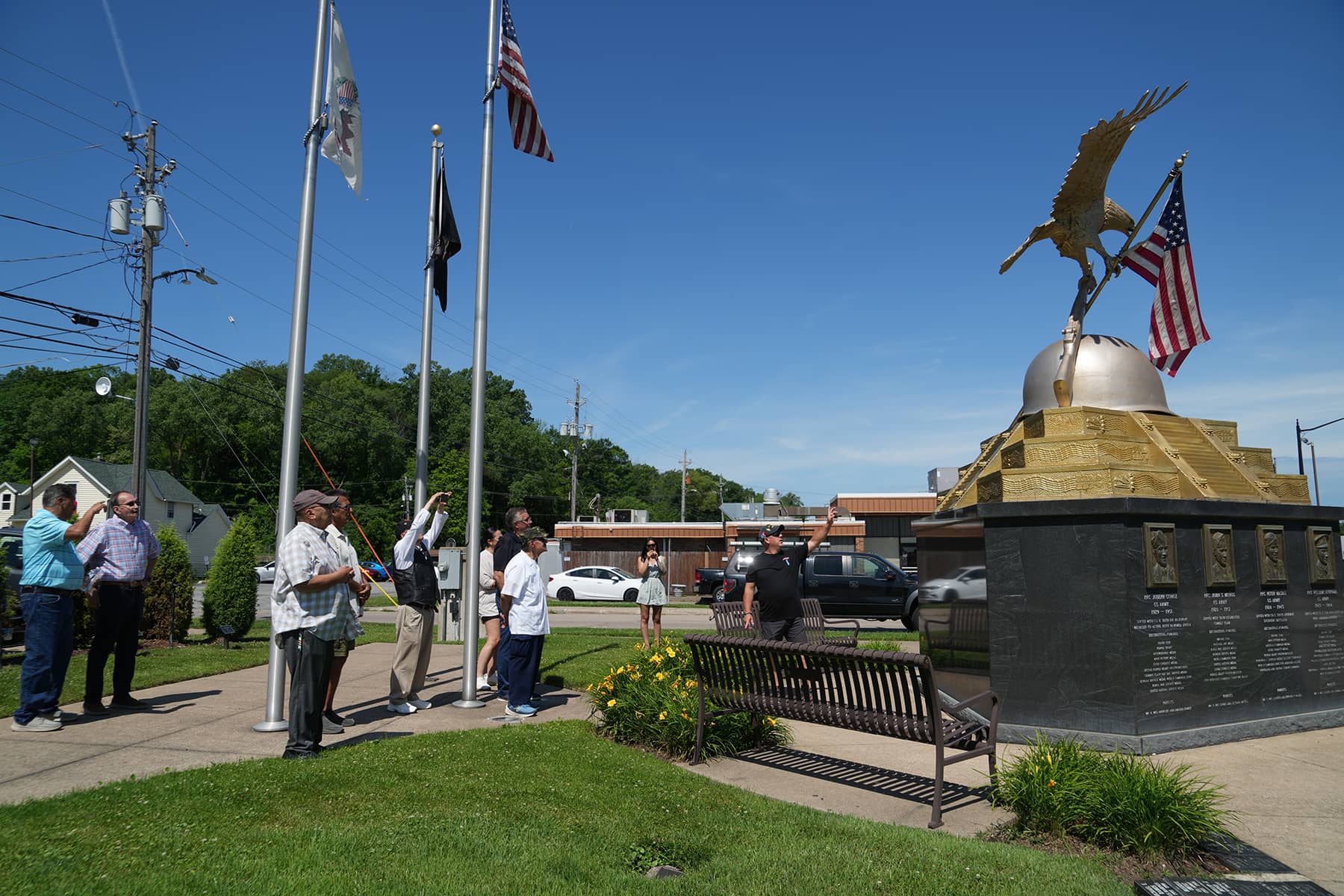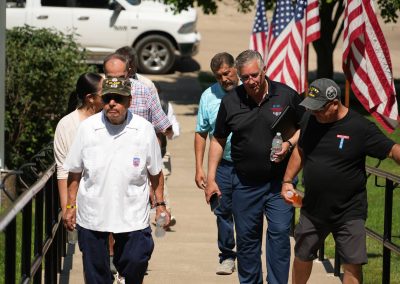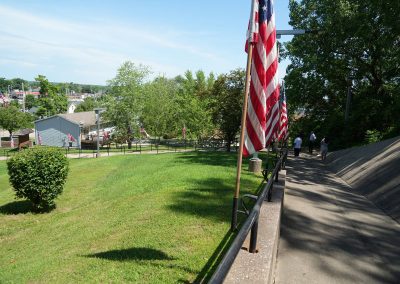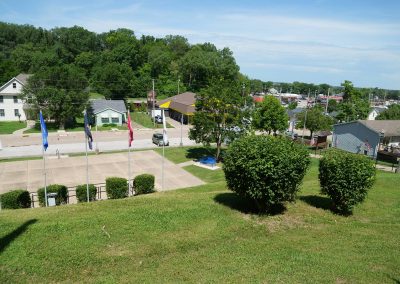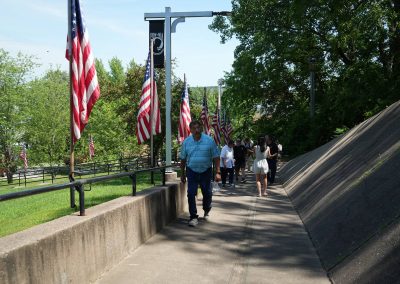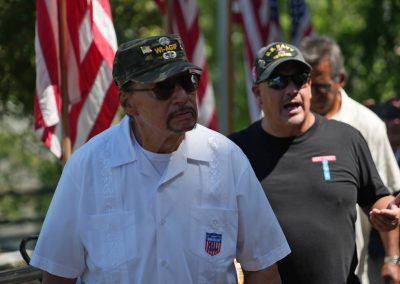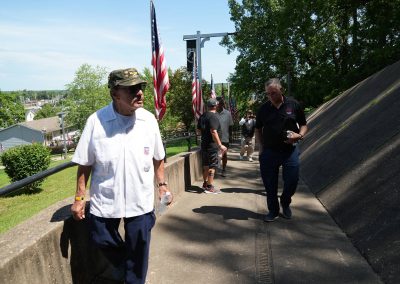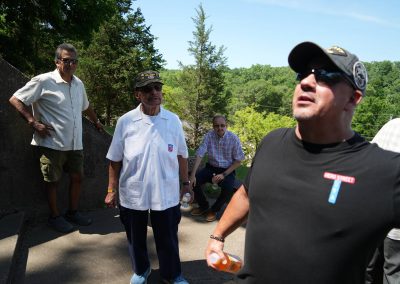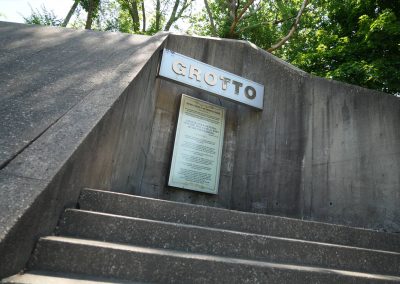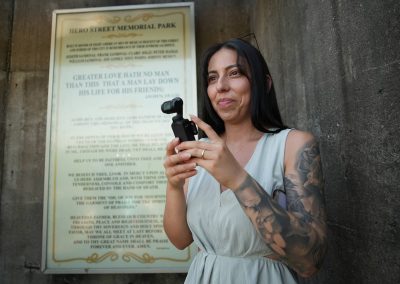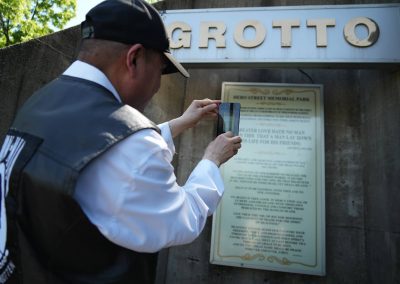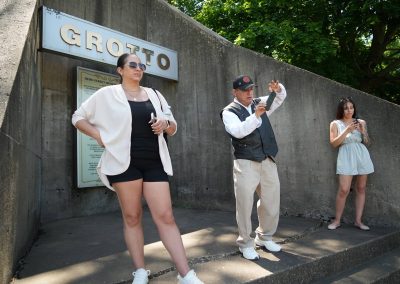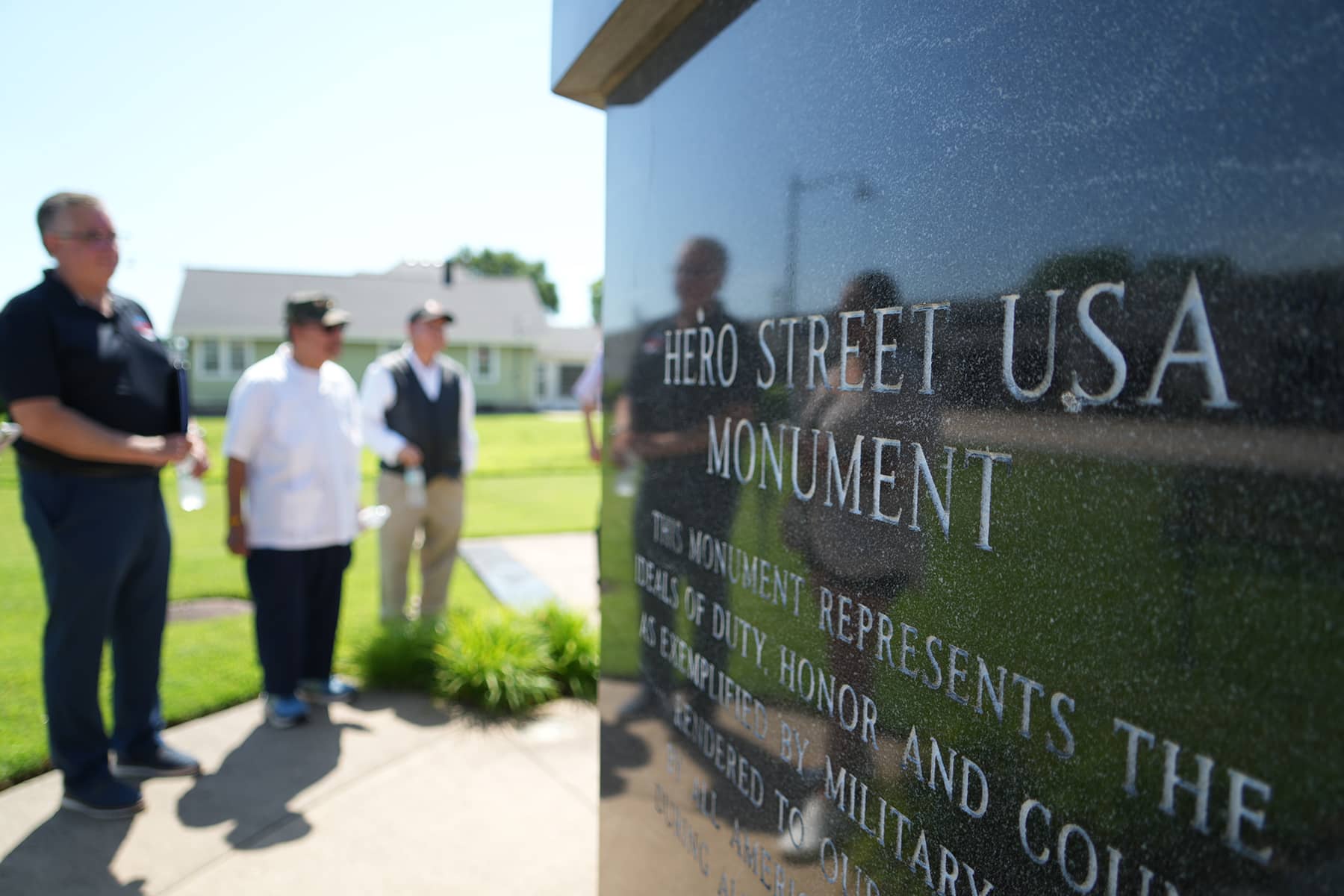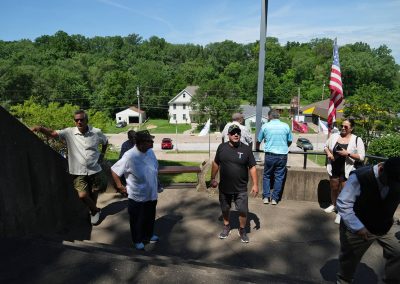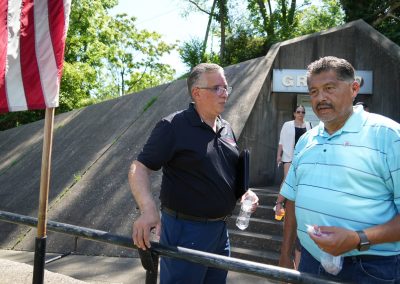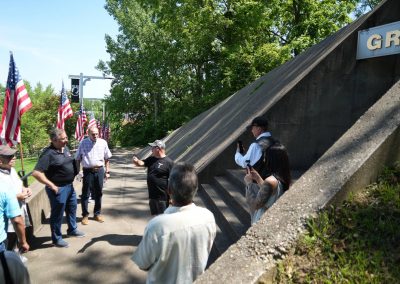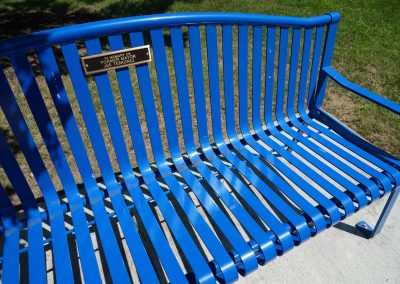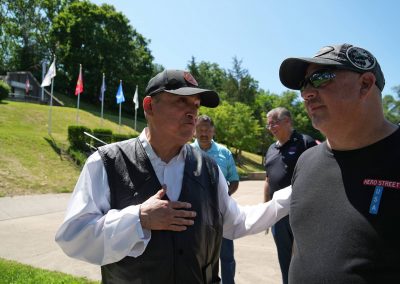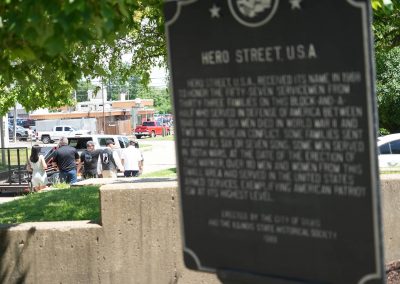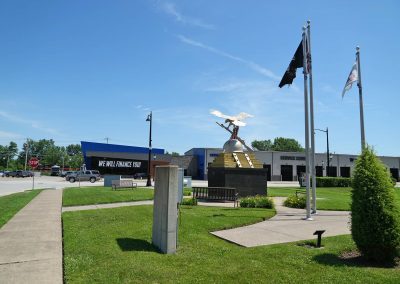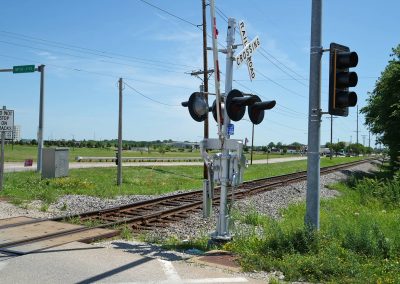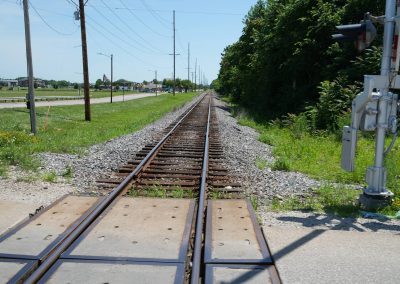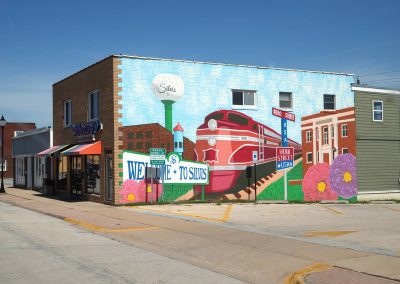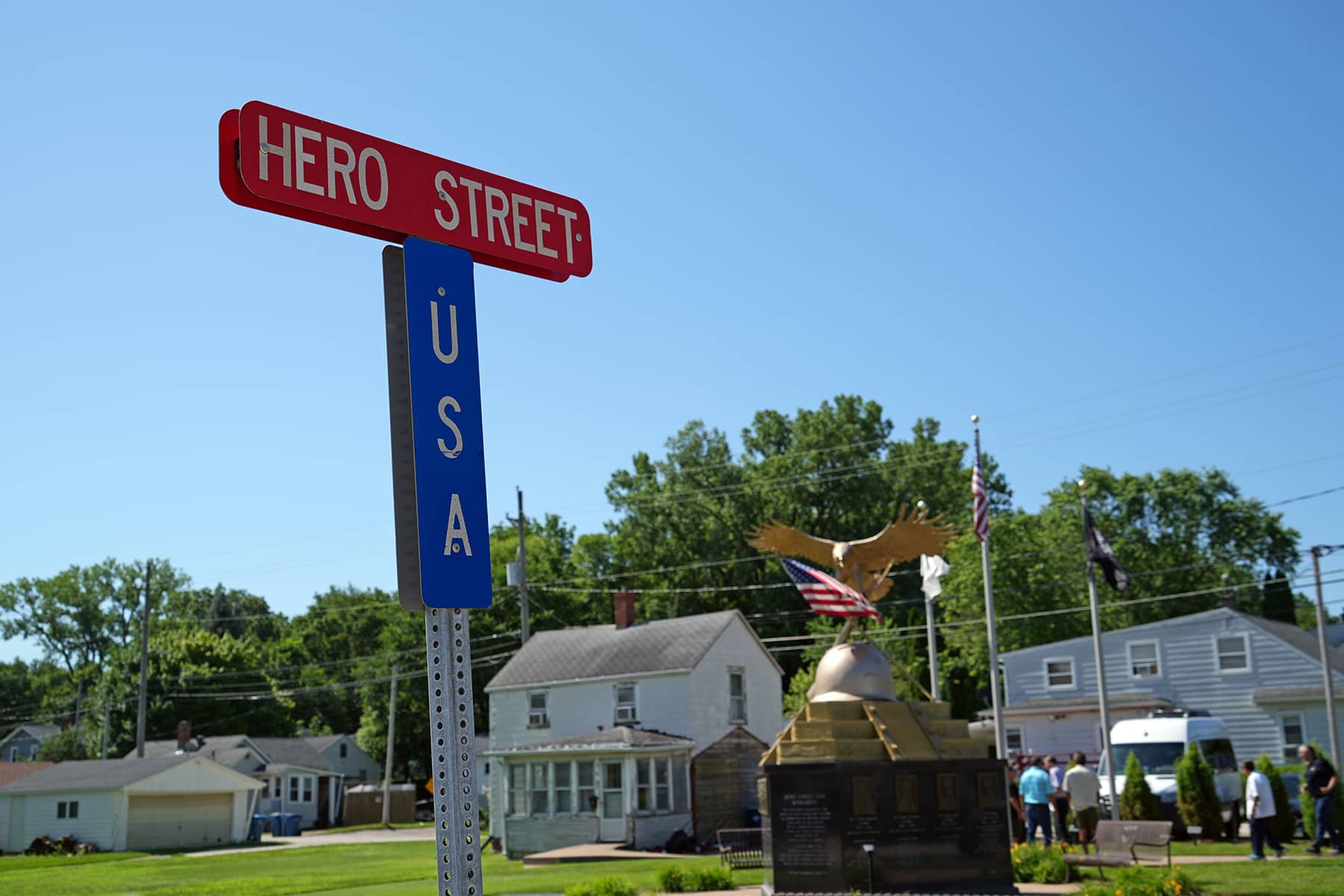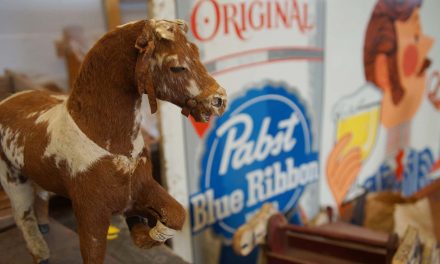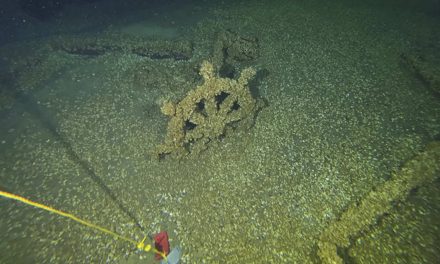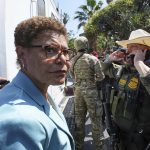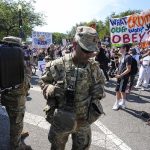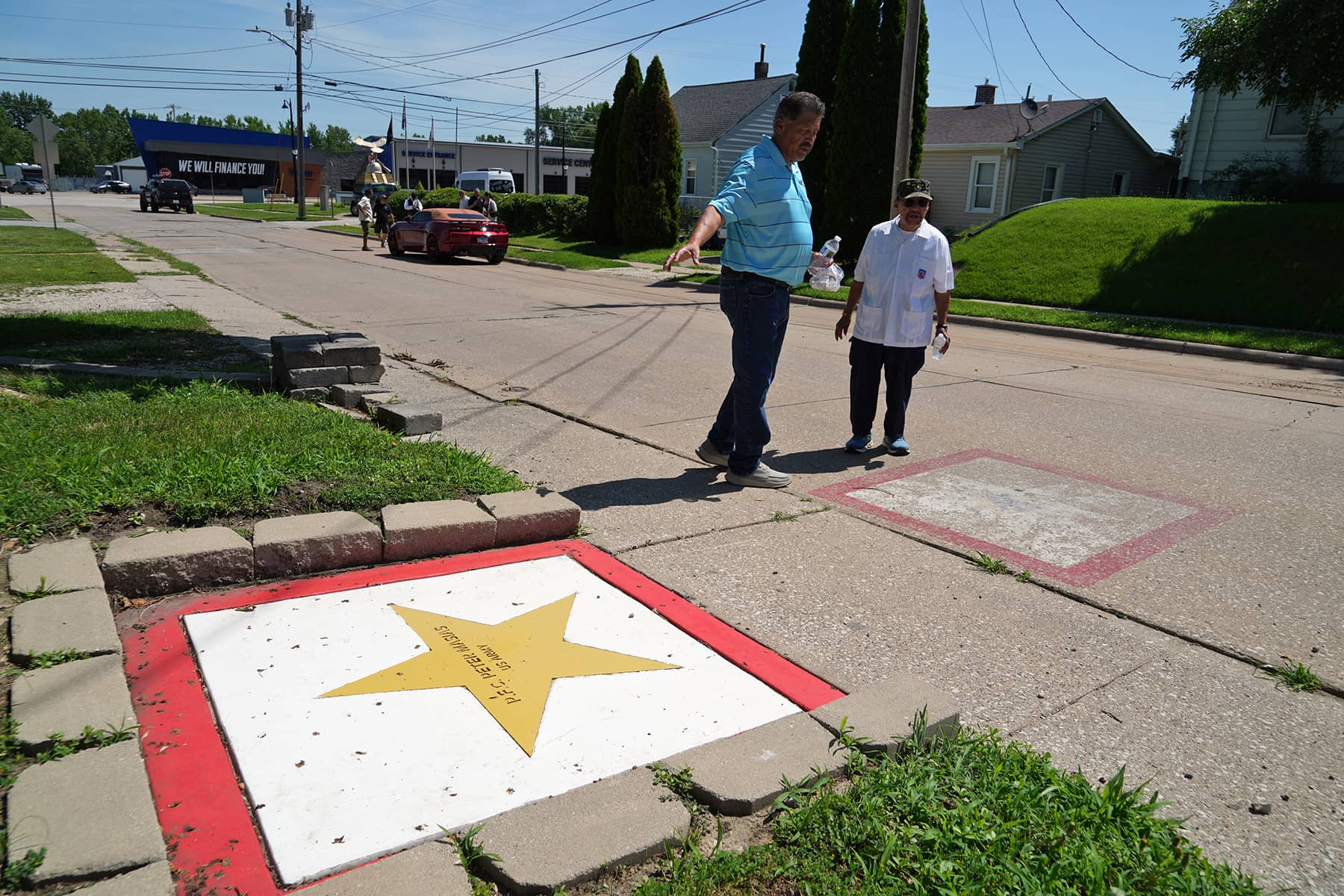
A group of Latino veterans and community leaders from Milwaukee made a solemn and inspirational visit on June 28 to “Hero Street, U.S.A.” in Silvis, Illinois, a one-and-a-half block neighborhood known for the many Hispanic residents who served in the U.S. military during World War II and the Korean War.
The trip was led by Forward Latino’s president, Darryl Morin, who shared real-time updates across social media as the delegation traveled from Milwaukee to the historic community that has become a national symbol of Latino military duty, honor, and sacrifice.
The visit was more than a gesture of remembrance. It was also a research mission. Members of the American GI Forum of Wisconsin (AGIF-WI) and the Latino Veterans’ Legacy of Valor Foundation (LVLVF) made the journey to learn firsthand how Silvis created its powerful tribute to Latino service members.
Both organizations have been working toward a permanent monument in Milwaukee to honor Latino veterans from across Wisconsin. The LVLVF, a branch of AGIF-WI, focuses on preserving and elevating these stories.
“Our sole purpose is to build a memorial to honor Latino veterans from Wisconsin,” said Ciera Arias, a Marine Corps veteran and board member of the foundation. “We know how important it is to say that we’re here, and that we did serve just like everyone else. But we’re also excited to see something real, something we can connect with. To see that something like ‘Hero Street’ has come to fruition means a lot.”
The trip was made possible in part by the support of LULAC Council 10 of Davenport, Iowa, a proud sponsor of the event. Council 10 is one of the oldest and most active in the Midwest and has a long record of civic engagement, labor activism, and advocacy for veterans and education.
Among the Milwaukee delegation was George Banda, a combat medic during the Vietnam War. He was awarded the Silver Star, Bronze Star with “V” device, and Purple Heart for heroism under fire at the age of 20. Banda has been a beloved member of the Milwaukee community and an advocate for all veterans. His example is a reminder of the enduring legacy of Latino military service across generations.
> READ: George Banda: Honoring lost friends in vigil to Vietnam veterans at The Wall
The tour through Hero Street was led by Brian Muños, a retired Navy SEAL and Gulf War veteran. He was born and raised in Silvis, and his great-uncle, Johnny Muños, was one of the eight fallen soldiers memorialized in the hallowed park that stretched up a small grassy bluff, locally known as “Billy Goat Hill.”
“The Mexican-Americans that came from this street, they fought for their families, they fought for a better way of life, they fought to represent who we are,” said Muños. “My great-grandparents uprooted their family from Mexico to come here for a dream. They came here to work for a better life. In doing so, their children decided that they had to do their part and represent this country, represent that flag, and be a part of the fight for freedom.”
Mayor Robert Cervantes of Silvis also joined the Milwaukee delegation and welcomed them with a reminder that honoring veterans must remain nonpartisan and sincere.
“I’m glad you’re all here. One thing about me as mayor and as an alderman, I really don’t like coming down here to campaign. It’s a street dedicated to these eight boys,” said Mayor Cervantes. “I don’t think we should be trying to get a vote on the back of a veteran. It’s bad enough we don’t give them enough support and respect.”
Mayor Cervantes reflected on how the Hispanic community in Silvis had long been overlooked, even as its residents went willingly into battle overseas.
“That’s kind of the story of the Mexican people. We were okay when it came to going to war and fighting in a war, and we were proud to serve our country,” he said. “But when we came home, we became invisible to our country. It was easy to just forget about us and ignore our contributions.”
Mayor Cervantes told the visitors that he was working with U.S. Congressman Eric Sorensen to see that Joe Gomez was finally awarded the Congressional Medal of Honor for extraordinary gallantry in Korea. Back in World War II and Korea, many Black and Hispanic service members were overlooked for that decoration because of racial discrimination.
At the entrance of the Hero Street park stands a historical marker, installed by the City of Silvis and the Illinois State Historical Society in 1989. On it are etched the words:
“Hero Street, U.S.A. received its name in 1968 to honor the fifty-seven servicemen from thirty-three families on this block-and-a-half who served in defense of America between 1941 and 1968. Six men died in World War II and two in the Korean Conflict. Some families sent as many as six or seven sons; some men served in both wars. At the date of the erection of this marker, over 110 men and women from this small area had served in the United States Armed Services, exemplifying American patriotism at its highest level.”
Muños gave the group a deeply personal tour of the monuments around the neighborhood. His stories included the backgrounds of those who had lived in the homes along the street, many of which had been built originally from repurposed boxcars.
The history of Hero Street traces back to the Mexican Revolution, when workers were recruited by the railroad industry to come north. Families settled in Silvis to work at the Rock Island Railroad yard. With no money for lumber, they lived in converted boxcars that the railroad had abandoned. Those boxcars became not just shelters but homes. Several remain standing today, but are unrecognizable after being modified years ago by building expanded exteriors.
“When we lived in boxcars, we had no windows for air, no plumbing for water, no heat in the winter, we had nothing,” said Muños. “But we took those boxcars out of the railroad yard and eventually built these homes. You can still see their length and shape in some places, like in the original Muños house. That’s two boxcars side-by-side.”
The transformation from boxcars to homes and then community did not come easily. The original road was unpaved, and even burying the war dead required mourners to carry caskets over ground that was thick with mud.
“What you see here is a paved road. This is a real significant part of the story. When our original World War II brothers died and came home, we couldn’t get them up this street because there was nothing but dirt and mud,” said Muños. “We had to honor them, but we also have to honor their families as well… We have to remember that a loss impacts us all.”
Returning home after World War II and Korea, the Mexican-American veterans of Hero Street faced more than grief. Racial barriers kept them out of the local Veterans of Foreign Wars post. So they formed their own.
“They wouldn’t let them join the VFW when they came back from the wars. So we had to build our own VFW,” said Muños. “It was like that for most things. Our people did the best they could for each other. If you needed food, another family helped. Our community was all we had.”
In a twist of irony, the VFW, which had forbidden Latinos from joining, closed years ago due to a decline in membership. Ybarra-Gomez VFW Post 8890, founded in 1954 and named after Hero Street’s Jose Ybarra and Joseph Gomez, is still going strong today.
That same unity also helped turn their dirt road into a national landmark. In 1968, Silvis officially renamed Second Street as Hero Street, U.S.A., in honor of the neighborhood’s veterans. Two years later, in 1970, Hero Street Memorial Park was created at the top of the hill. The street and park later received recognition as a historic site and became a model for grassroots civic remembrance.
“The Memorial Park has been here since 1970 and was then declared a historical landmark thereafter,” said Mayor Cervantes. “Getting the name switched from Second Street Silvis to Hero Street Silvis all came about from the commissioning of the Memorial Park. So that’s how it began.”
According to Mayor Cervantes, it was a group of families, particularly the Solis family, who pushed for a more visible and street-level tribute. The monument and historical marker were developed to draw attention to the deeper story of their sacrifice.
“They came up with this design, they came up with this monument, and they came up with this tribute in order to gather the attention of the public, to invite them to see who we are, to come see what we have done,” the Mayor added.
Former Mayor Joe Terronez, a Silvis native raised in the boxcar community and a Korean War veteran, made history by becoming the first Hispanic mayor in the state of Illinois. He was elected mayor of Silvis after serving nearly three decades as an alderman on the Silvis City Council. Terronez was instrumental in the community’s efforts to gain recognition for its veterans.
In the 1960s, Terronez led the successful push to pave the once-muddy Second Street and rename it Hero Street U.S.A. His leadership was shaped by his family’s own sacrifice, including his brother’s service in World War II.
His efforts were essential in securing municipal support and building grassroots momentum for the historical marker and park that define Hero Street today. Colleagues said Terronez tirelessly reminded the city that the street symbolized not just the lives lost, but the lives changed by their courage.
The eight fallen who are honored on Hero Street include Claro Solis, Peter Macias, Frank Sandoval, Joseph Sandoval, Willie Sandoval, Joseph Gomez, Johnny Muños, and Tony Pompa. Some of them died in Europe. Others in the Pacific. Some were killed during combat operations in Korea. Their families lived within steps of each other, sharing not only meals and labor, but grief and memory.
“I know how my grandma felt, I know how my dad felt. They all knew each other, they all helped each other,” Muños added. “They fought for this flag. They fought for our history. They fought for our freedom. Not just for themselves, but for their families and for the spirit of America.”
The children who lived along that block shared more than just an address. Their lives were deeply intertwined from the very beginning. As the first generation born to Mexican immigrants in America, they navigated a world shaped by both their parents’ traditions and the realities of their new homeland.
Their families had come seeking opportunity, but even with their fathers toiling away on the railroad for wages that surpassed anything back home, financial hardship remained a constant companion.
Despite those challenges, the children found strength and unity in their shared experiences, growing up side by side and supporting one another through the struggles of their everyday lives. From that shared beginning came eight young men who would go on to serve their country, and never return alive.
Born in Guanajuato, Mexico, on January 17, 1924, Tony Pompa moved with his family to Silvis in 1927, where they initially lived in a boxcar. After losing his job at the Rock Island Arsenal because he was not a citizen, he enlisted in the U.S. Army Air Corps under the name Tony Lopez on July 18, 1941, hoping to gain citizenship through service. As a tail gunner aboard a B-24, Pompa flew missions over Europe. On January 31, 1944, during a flight over northern Italy, their plane was hit by German anti-aircraft fire. With his parachute damaged, Pompa remained to help another crew member escape, rather than save himself. He was listed as missing in March 1944 and later presumed dead. His remains were returned in 1949 for burial at Rock Island National Cemetery.
Frank Sandoval, born September 5, 1920, in Silvis to Mexican immigrants, left school early to work for the Rock Island Lines. He joined the U.S. Army on September 19, 1942, and was assigned to the 209th Engineer Combat Battalion. Sandoval worked on constructing the Ledo Road in the China–Burma–India Theater, and later fought with Merrill’s Marauders at Myitkyina. He died in battle near the Irrawaddy River in Burma on June 26, 1944, at age 23. His body was returned in 1948, and he was buried at Rock Island National Cemetery.
William Sandoval was born on September 16, 1923, in Lake Lillian, Minnesota, and relocated with his family to Silvis in 1925. He completed high school at East Moline in 1942 and joined the Army the following year, serving with the 504th Parachute Infantry Regiment, 82nd Airborne Division. Sandoval saw combat in North Africa, Sicily, and Italy, and participated in Operation Market Garden in the Netherlands, helping secure the Nijmegen bridge. He was killed near Zyfflich, Germany, on October 6, 1944. His remains were never found, but he is memorialized at both Rock Island National Cemetery and the Netherlands American Cemetery.
Born August 12, 1920, in Silvis to parents from Mexico, Claro Solis graduated from East Moline High School in 1940 and worked at John Deere before enlisting in the Army on October 7, 1942. Serving with Company E, 120th Infantry Regiment, 30th Infantry Division, he fought in France and Belgium. Solis was wounded by artillery during the Battle of the Bulge on January 16, 1945, and died three days later at age 23. Initially buried in Belgium, his remains were moved to Rock Island National Cemetery in October 1948. In a letter he wrote to Frank Sandoval, he described their street as “really not much, just mud and ruts, but right now to me it is the greatest street in the world.”
A Silvis native born to Mexican-American parents, Peter Macias lived on the muddy Second Street and served with the 139th Engineering Battalion in World War II. He fought in the Ardennes-Alsace, Rhineland, and Central Europe campaigns. Macias was killed in Belgium on March 4, 1945, and is honored at Rock Island National Cemetery as one of the Hero Street Eight.
Joseph Sandoval was born March 8, 1919, in a Silvis boxcar on the Rock Island rail yard to Edubigis “Ed” Morado Sandoval and Angelina Hernandez Sandoval, both Mexican immigrants. He married Manuela “Nellie” Segura in August 1940 and had a son, Henry. After registering for the draft while working for the CBI Railroad, he joined the Army in January 1944 and trained in Alabama before being sent to Europe with Company I, 41st Armored Infantry Regiment. He fought in Normandy, was wounded in November, and returned to action in March 1945. On April 14, 1945, during a battle near Schönebeck, Germany, while his unit defended a bridgehead on the Elbe River, he was reported missing and later presumed dead. His body was returned in December 1948 and buried next to his brother Frank at Rock Island National Cemetery.
Born November 13, 1929, in Silvis’s Hero Street neighborhood, Joseph Gomez joined the Army near the end of World War II, serving with Company K, 38th Infantry Regiment, 2nd Infantry Division in Europe. He remained in the Army and later fought in Korea, earning the Silver Star for bravery. Gomez died in combat on Hill 800 in Hongcheon, South Korea, on May 28, 1951. Gomez’s remains were never recovered or returned. Although Gomez has no known grave, his name appears at Rock Island National Cemetery and on the Hero Street memorial.
John S. Muños served as a Private First Class with Company F, 38th Infantry Regiment, 2nd Infantry Division in the Korean War. During August 1951, his unit was engaged in intense fighting along Bloody Ridge near the Punchbowl in Yanggu, South Korea, an east-central area known for difficult terrain and fortified enemy positions. Muños was killed on August 27, 1951, as UN forces fought to secure the high ground from North Korean and Chinese troops. His remains were returned to Silvis for burial at Rock Island National Cemetery.
The legacy of Hero Street extends far beyond Silvis. Over the decades, the remarkable story of the eight young men from a single block who gave their lives for their country has been chronicled in books and multiple documentaries.
Works like Hero Street, USA: The Story of Little Mexico’s Fallen Soldiers have brought national attention to the neighborhood’s sacrifice and perseverance.
Educational film projects, like Hero Street: A Historical Documentary Film Series by Emmy Award-winning filmmakers Kelly and Tammy Rundle, have aired both locally and nationally. These films offer viewers an intimate look at the personal histories of the eight young men, the families they left behind, their shared memories, local activism over generations, the enduring meaning of the street’s name, and the continued impact on the community that rose to honor their lost sons.
“We’ve now completed four films. The first talks about how the families settled in the Quad Cities, and then we will have a film for each of the eight heroes. That’s our plan, to keep going and telling each story,” said Kelly Rundle, Producer-Director at Fourth Wall Films. “Hero Street is representative of a much larger national history story. There are other communities with similar histories, but this story captures people’s imagination and allows us to tell a larger story through these young men.”
Using both scholarship and film, Hero Street’s significance has become part of the American record, ensuring that the stories of its families and their fallen will not be forgotten.
Which is what captured the attention of the Milwaukee visitors, who came not just to pay tribute, but to bring lessons home. The challenges faced by the families of Hero Street, like poverty, exclusion, and postwar erasure, echo in many communities still fighting to be recognized, including Milwaukee.
For groups like AGIF-WI, LVLVF, and Forward Latino, Hero Street is a living model of what remembrance can mean, and a roadmap for how to achieve it. Their journey, and the mission to install a monument in Milwaukee, now carries forward the blueprint of bravery carved by the families of Silvis.
© Photo
Lee Matz

